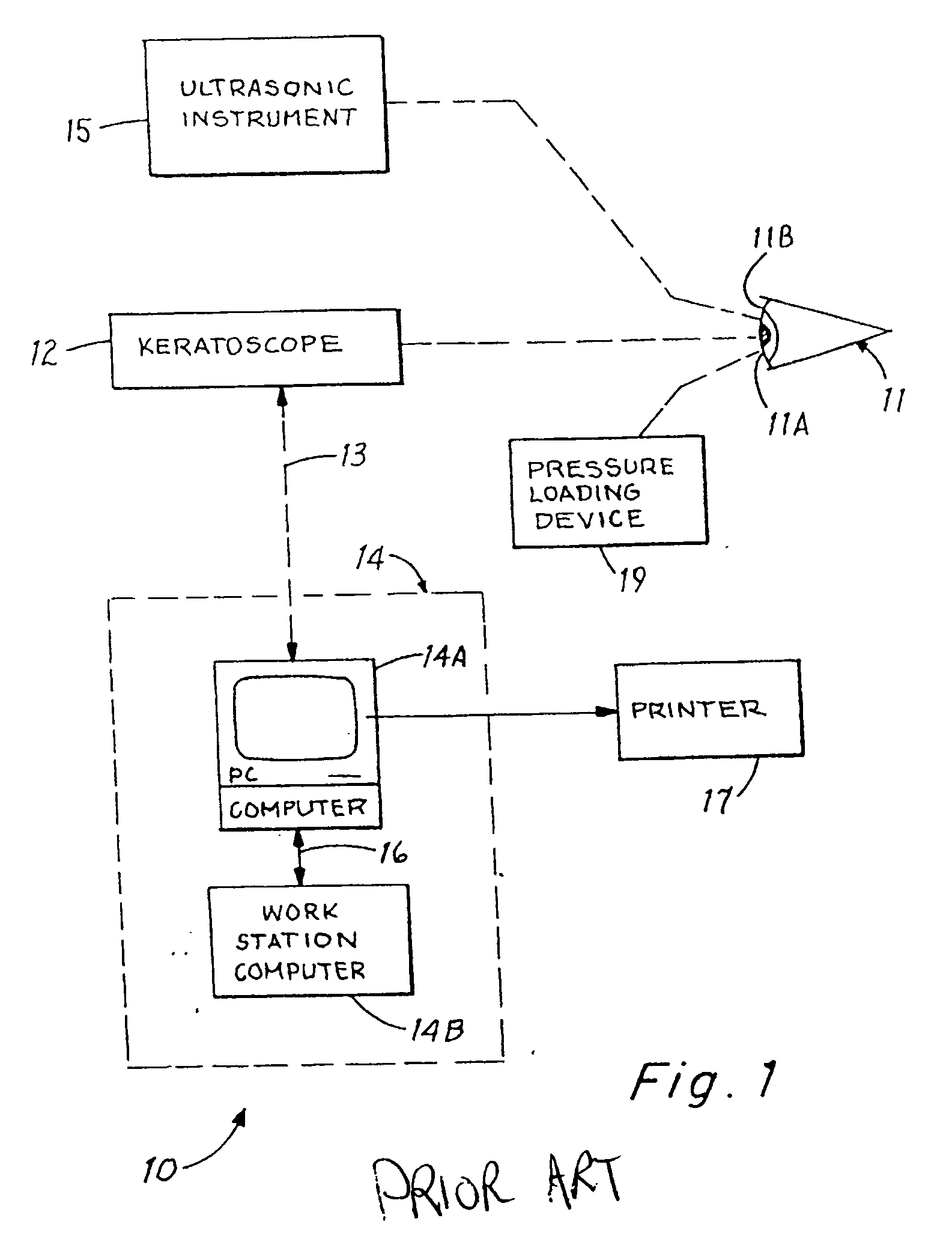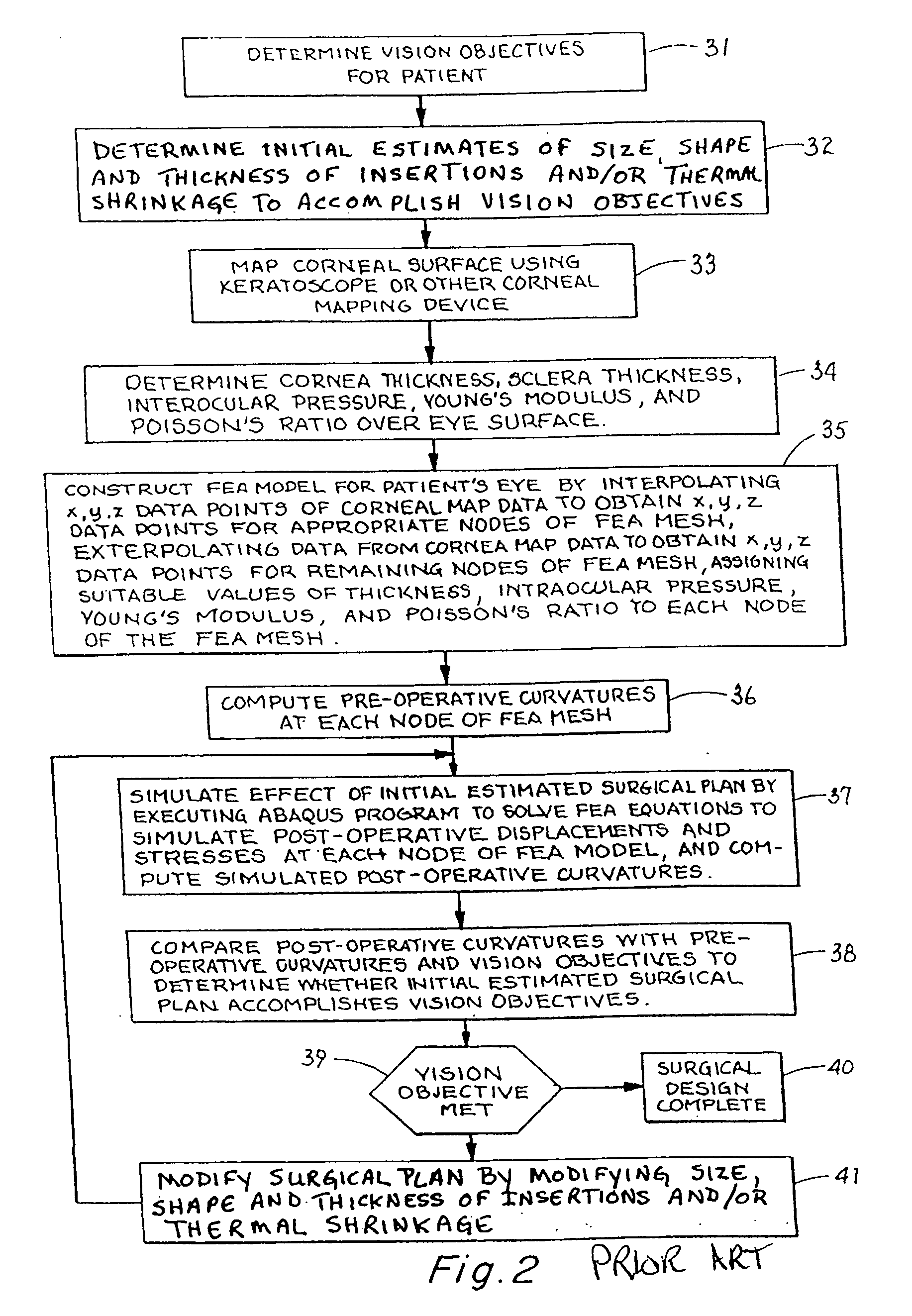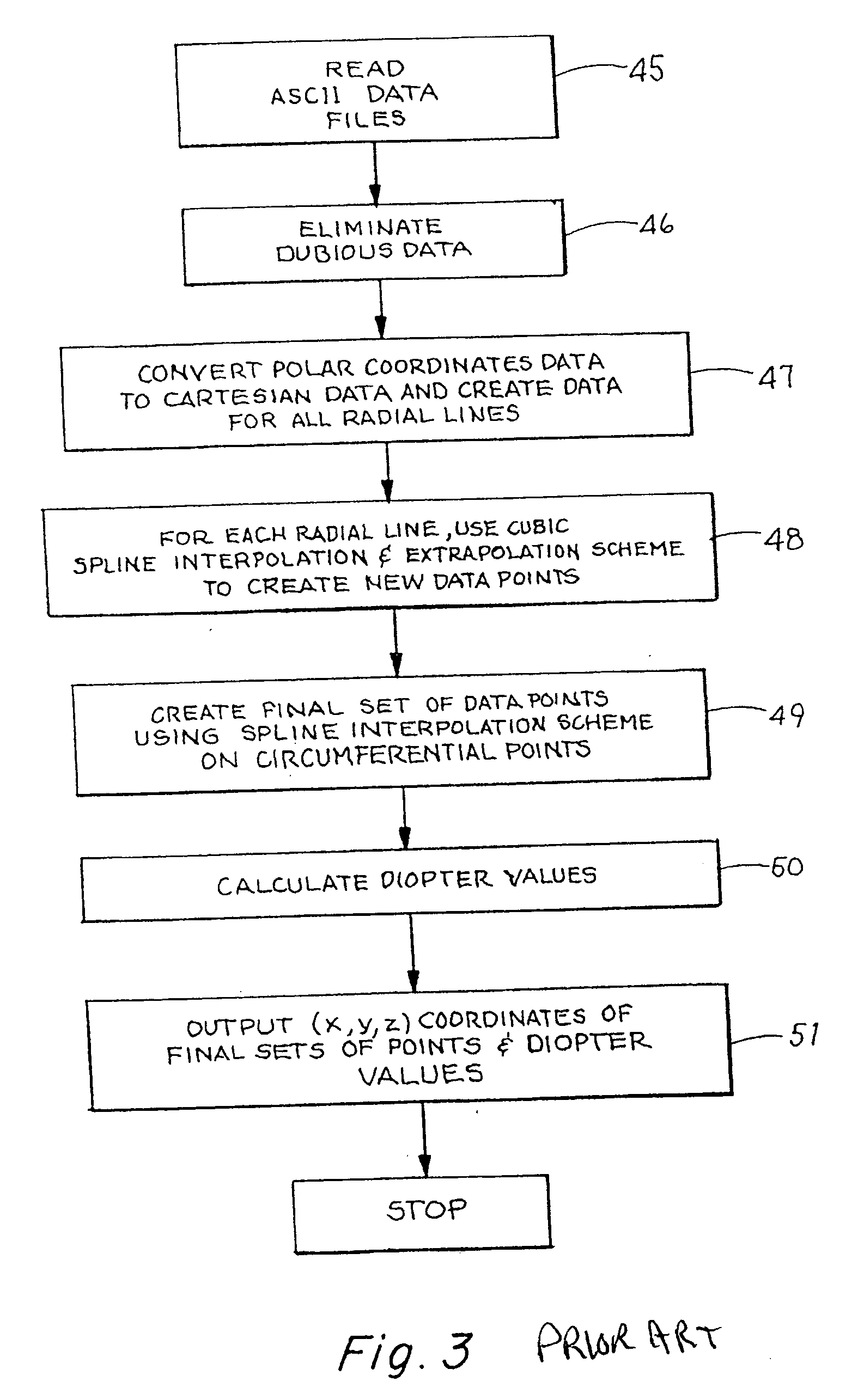Method and apparatus for automated simulation and design of corneal refractive procedures
a corneal refractive and automated simulation technology, applied in the field of corneal refractive procedures, can solve the problems of not accurately modeling any real strain relationship felt by the cornea, unable to disclose any particular adequate mathematical model of corneal strain relationship or any specific recommendation of surgical design that has been validated, etc., to reduce the invasiveness of surgical procedures, reduce the multi-focal imaging of the central cornea, and reduce the effect of irregular astigmatism
- Summary
- Abstract
- Description
- Claims
- Application Information
AI Technical Summary
Benefits of technology
Problems solved by technology
Method used
Image
Examples
Embodiment Construction
[0032] The present invention involves constructing a strain determining model of a human eye using a suitable three-dimensional finite element analysis (FEA) model that includes a mesh that generally corresponds to the shape of the human eye. The finite element mesh is obtained using back calculated strain data and translated into the nodal points of the FEA model and describes the strain characteristics of the human eye. The nodal points in a small region are connected to each other, to form a finite set of elements. The elements are connected to each other by means of sharing common nodes. The strain values at any particular region are obtained by back calculation and are applied to the elements. The “loading” of the finite element mesh structure is represented by the intraocular pressure, and the resistance of the structure to such applied “loading” is measured by the stiffness of the structure, which is computed on the basis of its geometry, boundary conditions, and its material...
PUM
 Login to View More
Login to View More Abstract
Description
Claims
Application Information
 Login to View More
Login to View More - R&D
- Intellectual Property
- Life Sciences
- Materials
- Tech Scout
- Unparalleled Data Quality
- Higher Quality Content
- 60% Fewer Hallucinations
Browse by: Latest US Patents, China's latest patents, Technical Efficacy Thesaurus, Application Domain, Technology Topic, Popular Technical Reports.
© 2025 PatSnap. All rights reserved.Legal|Privacy policy|Modern Slavery Act Transparency Statement|Sitemap|About US| Contact US: help@patsnap.com



